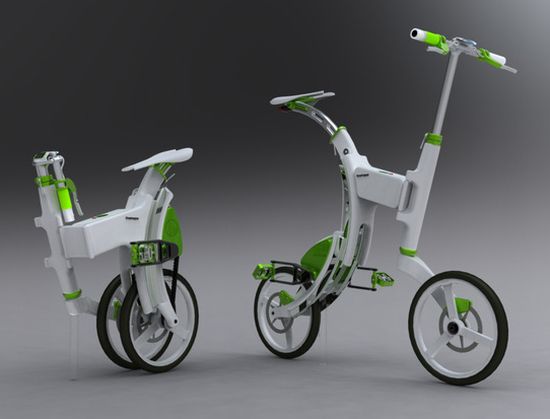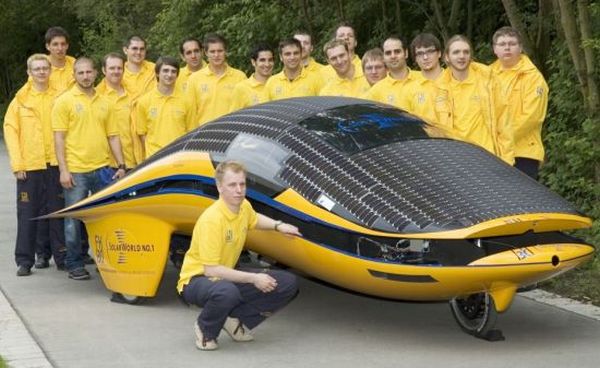
The ever-spiraling cost of fuel and its equally harmful effects on the environment has forced many to think of newer and greener sources of energy for their cars. The breakthrough came when Ed Passerini (in 1977) constructed his own completely solar-powered car called the “Bluebird” and Larry Perkins drove his “Quiet Achiever” in 1982. Since then the automotive industry has been looking toward the innovative applications of solar power. Solar cars use photovoltaic cells to convert the sun’s rays into usable energy.
Since most solar cars are designed as race cars, this trend has contributed in a big way for the initiation of the global solar car races namely the World Solar Challenge, Australia (started in 1983, this 3,012-kilometer race goes across Australia and happens every three years.) and the Toyota American Solar Challenge (a 3,862-kilometer ace from Dallas, Texas, to Alberta, Calgary). These global races have also inspired many entrants include school, corporate and hobbyist teams in this field. Invigorated by this spate of attention, several consulting companies, such as Phoenix Snider Power, have started offering them technical and financial services for developing solar cars worldwide. Some of the most creative solar cars invented by the students are listed below:
Sunswift Ivy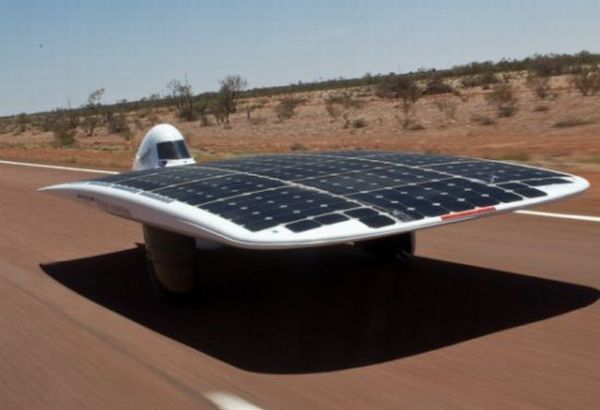
This state-of-the-art solar-powered car has been designed by students and faculty at the University of New South Wales (UNSW). Their claim to fame came when they set a new record for the Guinness World Land-Speed record for a solar-powered vehicle in January 2011. Sunswift Ivy drove at 88 km/hr on roughly 1500 Watts.
The car weighs about 1/10th of a conventional car and equipped with a 98% efficient Brushless CSIRO 3 phase DC motor needs just 1300 watts of solar generated power to achieve its estimated average speed of 85 km/h.The vehicle built on “open-sourced” experience of engineers, hackers, and tinkerers around the world comprises of a full scale multi-disciplinary, student-led solar racing team. Their dream was made possible by $280,000 AUD funding made by liberal donors and corporate sponsors and of course by the UNSW.
The car weighs about 1/10th of a conventional car and equipped with a 98% efficient Brushless CSIRO 3 phase DC motor needs just 1300 watts of solar generated power to achieve its estimated average speed of 85 km/h.
SC4 Solar Car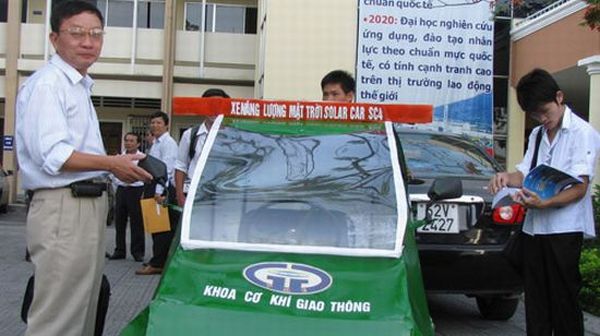
This car has been designed by three engineering students from the Department of Traffic Engineering of Vietnam’s Da Nang University of Technology. Ta Ngoc Thien Binh, Huynh Kim Trang and Pham Nguyen Son under the careful and supportive guidance of Duong Viet Dung, a teacher from their faculty, has come up with a solar car which can hit a maximum speed of 30kph and weighs around 350 Kg. The SC4, which costs about US$4,200, can run for 30km on single charge and can also run on liquefied natural gas(LPG). Based on the technology invented by Professor Dr Bui Van Ga, the car runs by a heat engine using LPG (which is built along the electricity engine) when the supply of electricity runs out or there is no sunlight.
Advay II
The 10th Auto Expo January 2011 New Delhi witnessed a unique futuristic yellow solar car called Advay II, which was designed by a group of 16 resourceful students from the Netaji Subhash Institute of Technology, Delhi University.
The non-polluting, zero-emission vehicle, is only 5 meters in length with aluminum interiors. The carbon fiber-reinforced sheets and polyurethane foam mixture used to make the exterior body of the car has helped in reducing the weight of the car to 380 kg. Furthermore, the aerofoil design of the car offers minimum resistance to air making the car fast and aerodynamic.
SolarWorld No.1
This car is as close as possible to our dream of having a cleaner greener primary mode of transport. The car being the fruit of hard labor of over two years by a team of 50 students and professors from the University of Applied Sciences Bochum in North America performs at an average speed of 73km/h with a top speed of 120 km/h over 3000 km in the race. SolarWorldNo.1 is powered by an electric motor which is built into the front wheel rim and can deliver 94% degree of efficiency drawing energy from 6m2 solar cells, which are embedded in the body. Owing to its efficient design it came in at 4th place at the World Solar Challenge held in Australia while also winning the Best Challenge Class Design Award.
TMT Palestine’s first solar electric car
Palestine is finally seeing a greener horizon, and has rolled out its first solar powered set of four wheels. A group of engineering students from the Palestine Polytechnic University in Hebron have turned to harness its warm sunny weather with about 300 sunny days per year to design a solar car which closely resembles a golf cart and is called as the TMT. Using 24 volts that is drawn from its 12 batteries the car can power up for 3 to 5 hours.
Bethany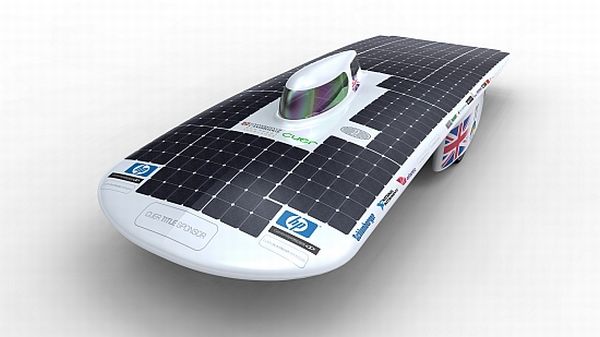
A team of students at the Cambridge University have developed a new solar car, entitled the “Bethany”, which can cruise at 60 mph, using the same amount of energy as a conventional hairdryer. Weighing just 170kg, the car generates energy using an array of high-efficiency silicon cells which together creates the car’s solar skin. Apart from generating energy from the sun, the car has been incorporated with regenerative braking systems, which recharge the car’s batteries when brakes are applied. “Bethany” has been designed using the latest computer simulation software, which gives it the ability to run at 50 times less power than a normal petrol-fueled vehicle. In June, the car will be competing in the World Solar Challenge race from Darwin to Adelaide, a distance of over 3,000km. The technology used in the car does give it the edge. However, costing £200,000, the technology cannot be used in commercial cars.
Siemens Sunchaser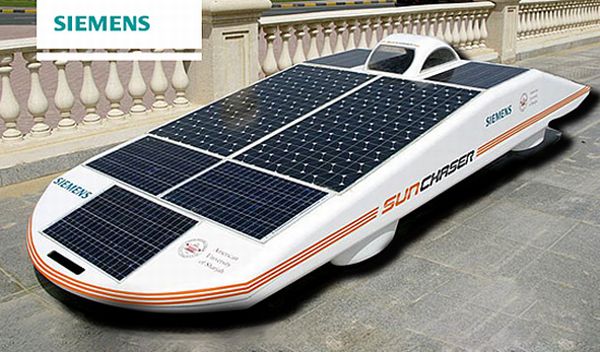
Working along with Siemens LLC, students at the American University of Sharjah (AUS) have developed a solar-powered car they call the Sunchaser. Designed as a regional prototype for vehicles, the Siemens Sunchaser is powered by 740 Sanyo HIT 220 watts and BP 35U 50W solar panels that are divided into four sub-arrays. Together the solar panels charge 30 Kokam 40Ah lithium-ion batteries. The power from the lithium-ion battery pack is transmitted to two brushless DC motors which deliver a total torque at the rated speed of 20.8Nm, allowing the car to run at a speed of around 90km/h while operating at 115 volts. The car will remain on the AUS campus, where its features will be optimized for greater performance.
Ford Model-T replica
A student team at the Waterloo Collegiate Institute has designed a solar-powered truck modeled on the famous Ford Model-T design and hence named as the Ford Model-T replica. Built on a sponsorship of just $4300, won from the Reduce the Juice Foundation that promotes projects that reduce emissions, the vehicle has a golf cart gearbox, a computer joystick and a “suicide switch” that automatically stops the truck if the driver falls off. The team states that the solar truck can top out at 50kph, which is decent considering that it’s their first attempt.
Infinium solar car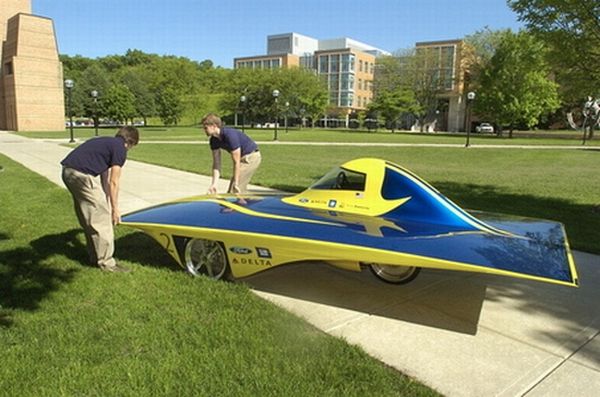
Students of the University of Michigan have developed a solar car called Infinium, powered entirely by the solar panels which cover the entire body of the sleek and lightweight car. The 600-pound car is made from a lightweight composite material that allows the car to reach a top speed of 80-100mph. After winning the 2010 American Solar Challenge (a 1,200 mile race from Tulsa, Okla. to Naperville) for the sixth time at a row, the group is now raising money by seeking donations for the equipment and the cost to race in Australia, which will add up to $2.4 million.
Apollo’s Chariot
A team of students of the American University of Beirut has come up with a steel and fiberglass one-seater solar car called Apollo’s Chariot after nine months of hard-working tutelage under their professor Daniel Asmar. The car weighing about 1,500 pounds is about 18 feet in length and 6 feet of width. Three dozen photovoltaic cells on the car’s body produce about 1,000 watts of electricity, stored in batteries built into the car. Built with about of $25,000 the car as promised by one of their designers, Amin Kanafani, can go as fast as 40mph. The designers hope to represent Lebanon in next year’s World Solar Challenge, a 2,000-mile Australian car rally for sun-powered vehicles.




